Vec Surfboards Shapes Each Board to the Surfer and the Wave
Orleans-based Shawn Vecchione crafts bespoke, hand-shaped boards for every kind of rider.

Cape-based surfboard shaper Shawn Vecchione stands beside one of his creations. / Photo by Elizabeth Cecil
Some of New England’s best waves happen in the dead of winter—when there’s snow on the beach and water temperatures peak just above freezing. “It’s harder to be a surf bum here than on the West Coast,” says Shawn Vecchione, founder and owner of Vec Surfboards in Orleans. Big swells do roll in on the Cape, they just don’t come as often as serious surfers might like. “When you’re cooped up in your house, and you’re not surfing every day or every other day, you can go crazy,” he says.
So for years, Vecchione traveled for the swell (and the adrenaline high) he craved. It was during a stint in Hawaii in 1999, working at his cousin’s surfboard factory and chasing big waves, that the native Cape Codder first chose to make a surfboard rather than ride one. He let his friends take an early iteration for a spin. “Watching them rip on it, and bust airs, and get big barrels….I was addicted,” he says. “It made me feel so good that I put that magic carpet ride under their feet.”
From there, Vecchione spent more than a decade bouncing between the East Coast and Hawaii—opening his first surf shop, Boarding House, with a friend here, running his own factory there, making boards for pros, and learning from some of the best surfboard shapers around. He landed back on the Cape for good in 2007 and launched Vec Surfboards, bringing the techniques he’d honed over the years back to New England. “I’m doing everything myself,” Vecchione says of his one-man operation. “I work at my own pace. Every time [a board] goes out, I know how good it is.”

Each board starts with a foam core. He uses a planer to shave it into a defined shape, including the thickness, the rocker (the board’s curve), and the rails (the edges). After shaping comes sanding—and a lot of it. / Photo by Elizabeth Cecil
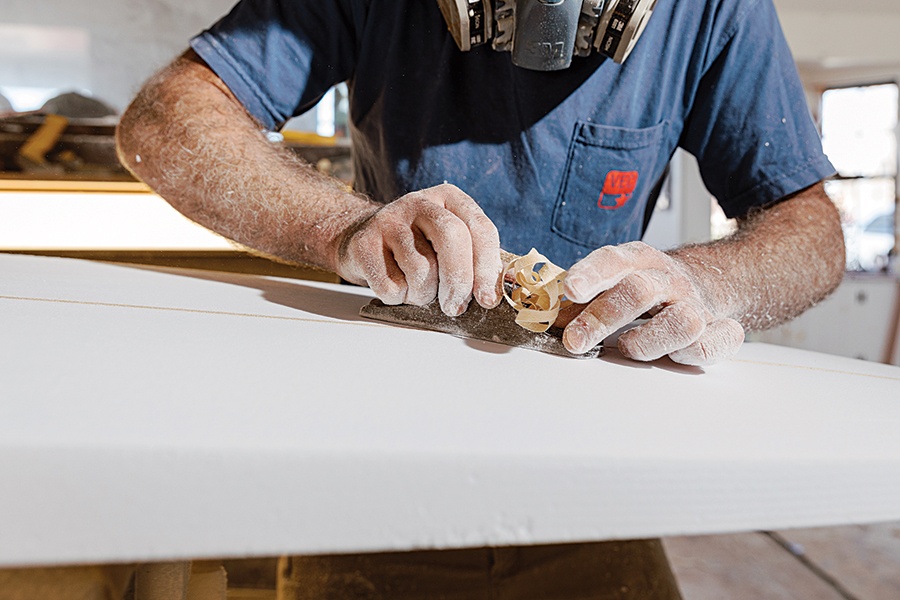
Dust and resin always find a way to leave the shop with him. “It’s a dirty job,” Vecchione says. / Photo by Elizabeth Cecil

Vecchione’s boards are on display in his workshop. / Photo by Elizabeth Cecil
The 50-year-old shaper crafts only bespoke boards—because the way he sees it, everyone should ride custom. “If I wasn’t a shaper, I would probably have a hard time going into a shop and [walking out] with something that I know fits me correctly,” he admits. “A custom board, [made by] a shaper that’s really good at sizing the person up to a board and to the surf break, is crucial.”
The smallest details, down to an eighth of an inch or a few degrees on a curve, drastically change the feel of a board and how it performs on a wave. So Vecchione ensures that the design process is personal, starting with a lengthy conversation to fine-tune each surfboard to its user—and more specifically, the exact waves they want to ride. For bigger, barrel-shaped waves (ones that curl over into a tube), a shortboard is best, like Vecchione’s favorite: the 6-foot “Answer” model. For the smaller breaks, you’ll need a longboard, something 9 feet or longer. And in New England, where conditions and swells change like the seasons, you’ll want to have a collection of boards fit to ride every kind of wave that rolls in.

Vecchione preps a surfboard before beginning the two-part process of glassing, or laminating and sealing it. / Photo by Elizabeth Cecil
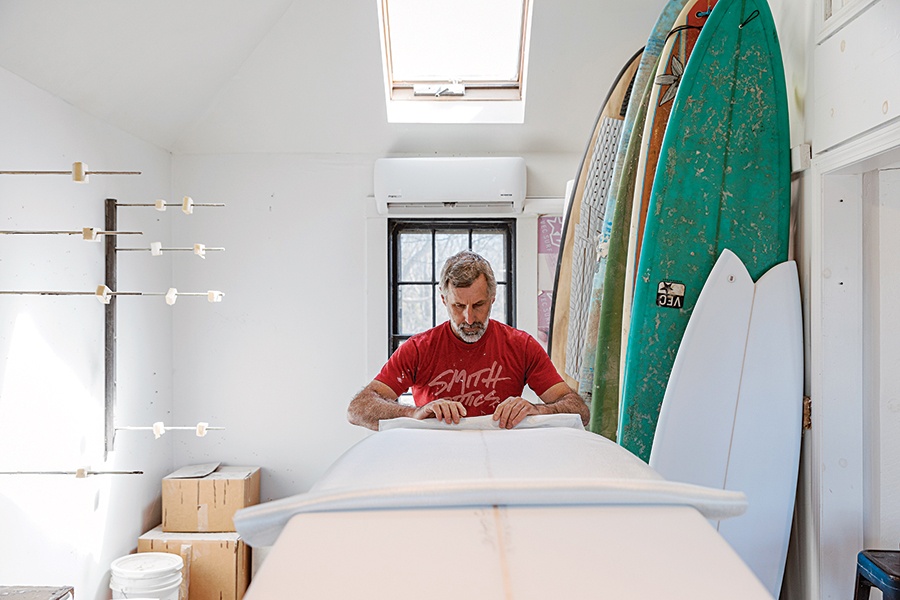
First, he rolls out a layer of fiberglass cloth across the entire board. / Photo by Elizabeth Cecil

Then Vecchione trims the excess fiberglass to fit. / Photo by Elizabeth Cecil
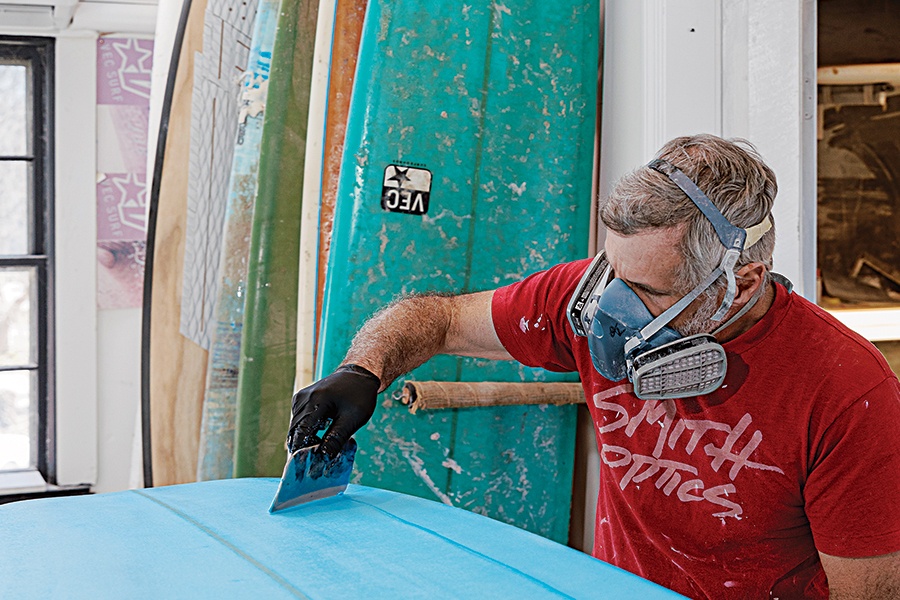
For surfboards with a little extra style, he adds color directly into the resin (which prevents it from fading in the sun). / Photo by Elizabeth Cecil
Because Vecchione personally hand-shapes and glasses (the process of laminating boards with coats of epoxy resin) 200 to 300 Vec Surfboards a year, the lead time is a little longer than, say, the instant gratification of buying a surfboard off the rack. But it’s the attention to detail that sets his boards apart. “When I make them, I put all my pride into it,” he says. “I like to take my time.”
Though it was the surfing lifestyle—traveling all over the world with other like-minded surf bums and hitting the waves—and not necessarily the work itself that first hooked Vecchione on surfboard shaping, it’s the joy of putting a board under someone’s feet (or his own) that’s kept him in it. It’s also the reason he won’t be retiring from shaping anytime soon. That, and the fact that he can put down his tools to catch a wave whenever the mood strikes. “I feel like it’s kind of a selfish job,” he says. “But I’m putting smiles on a lot of people’s faces and helping a lot of people have fun.”

The final steps involve a second resin “hot coat,” which is spread over the board to seal it before it’s sanded again for a smooth finish. / Photo by Elizabeth Cecil
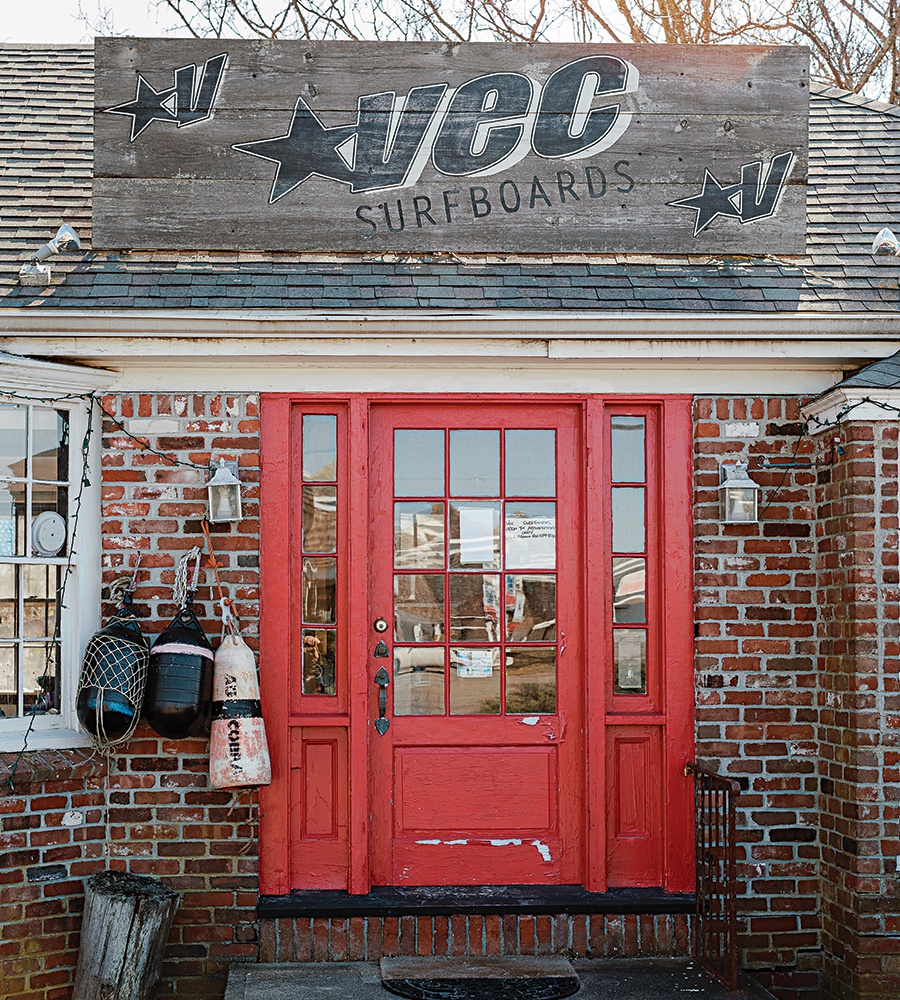
At Vecchione’s Orleans shop, he crafts boards for both young rippers and older ones alike. / Photo by Elizabeth Cecil
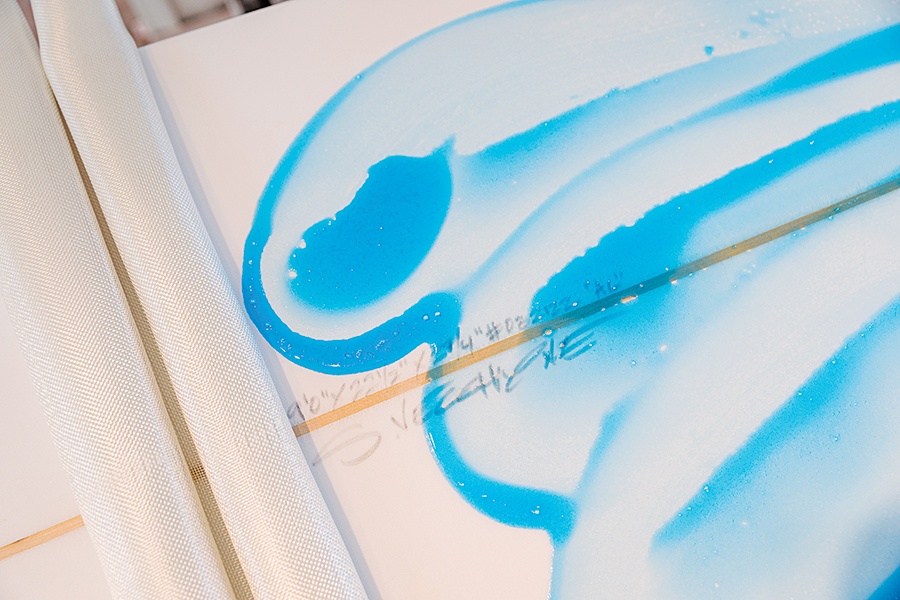
A small detail? Written on every board is its dimensions and Vecchione’s signature. / Photo by Elizabeth Cecil


